-

Colon - Irritable Bowel Syndrome
Irritable Bowel Syndrome
"Irritable bowel syndrome" (also known as "colon irritable bowel syndrome," or generally known as "sensitive gut”) is a general term for the symptoms of intestinal disorders, or symptoms caused by oversensitivity of the intestine, patients are subject to the following conditions:
1. Abdominal pain, bloating or abdominal discomfort usually subsides after defecation.
2. When there is abdominal pain, bloating or abdominal discomfort, bowel opening frequency will increase or decrease, or stool will become hard or loose.
Most people may occasionally have the above symptoms, but if the symptoms occur frequently (up to three times a month or more) or the symptoms affect their daily lives, and the underlying reasons cannot be found by colonoscopy, then you may be suffering from "Irritable Bowel Syndrome".
- Inflammatory Bowel Disease
Inflammatory Bowel Disease
Inflammatory Bowel Disease included Crohn’s Disease and Ulcerative Colitis. This is an autoimmune disease in which the body's own immune system attacks elements of the digestive system. They affect males and females, with the commonest age of onset in childhood, teens and early adult life. Previously restricted almost exclusively to the West, these conditions are becoming much more common in Asian countries, including Hong Kong – the cause of this dramatic change is unknown.
- Colorectal cancer
Colorectal cancer
What Is Rectal and Colon Cancer?
Rectal and colon cancer (also known as colorectal cancer) originates along the lining of the colon and rectum, initially as a polyp, specifically an adenoma. If not removed, adenomas can develop into colorectal cancers. By screening, adenomas can be discovered and removed, preventing progression into colorectal cancers. Thus, screening can effectively reduce the risk of developing and dying from colorectal cancer According to the most recent data from the Hong Kong Cancer Registry, colorectal cancer is now the most common cancer in the city, with more than 5,635 new cases diagnosed in 2017. Colorectal cancer is also the second leading cause of cancer related deaths in Hong Kong, with over 2000 deaths in 2015.
According to the most recent data from the Hong Kong Cancer Registry, colorectal cancer is now the most common cancer in the city, with more than 5,635 new cases diagnosed in 2017. Colorectal cancer is also the second leading cause of cancer related deaths in Hong Kong, with over 2000 deaths in 2015.
What are the risk factors for colorectal cancer?
Risk factors include- First degree relatives with colon cancer (relatives are at 2-3x higher risk of developing colorectal cancer than the general population, and are recommended to undergo colonoscopyscreening)
- Diabetes
- Fatty liver
- Obesity
- Smoking history
- Frequent alcohol intake
- Frequent red/processed meat consumption
- Minimal physical activity
- Minimal fiber intake
What are the symptoms of rectal and colon cancer?
Colorectal cancer can be asymptomatic but symptoms can include:- Colorectal cancer can be asymptomatic
- Blood in stool
- Mucus in stool
- Changes in bowel habits (diarrhea or constipation)
- Abdominal pain
- Unexplained weight loss
- Unexplained anemia
What to do if you suspect you might have rectal or colon cancer
If you have any of the above symptoms, you are recommended to seek medical consultation. A colonoscopy may be recommended. Faecal immunochemical testing is not suitable for symptomatic patients. Even if you do not have the above symptoms, international guidelines still recommend starting screening at 50 years old, using either: 1) fecal immunochemical testing or 2) colonoscopy Earlier screening may be recommended for high-risk groups, such as people with a first degree relative with colorectal cancer. Colorectal cancer can be prevented! You can make a difference.What are the differences between faecal occult blood testing and a colonoscopy?
COLONOSCOPY FECAL IMMUNOCHEMICAL TEST Diagnostic Ability Visual inspection of the colorectum Detects occult blood. If positive (blood detected), will need colonoscopy Therapeutic Capability Can remove polyps and take biopsies None Accuracy The most accurate for polyps and cancers Accurate for cancer Procedural Details After sedation, a thin flexible tube-like device with camera and light functions is used to examine the colorectum, taking usually 30 minutes in duration Stool collection at home, and return of kit to the centre Risks Approximately 1/1000 chance of serious adverse events None 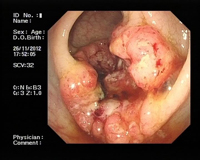
-

Esophagus and Stomach - Functional Dyspepsia
Functional Dyspepsia
Functional Dyspepsia is the commonest upper digestive disorder (about >70%). This is defined as recurrent epigastric pain or discomfort with normal upper gastrointestinal endoscopy result. The exact cause of functional dyspepsia is still unknown. The symptoms are related to personal lifestyle, e.g., irregular dietary habbit, stress, poor sleep and emotional fluctuation, etc but not related to any severe disease, such as gastrointestinal inflammation, ulcer or cancer, etc.
- Helicobacter pylori Infection
Helicobacter pylori Infection
Helicobacter pylori (H. pylori) is a bacterium found in the stomach and duodenum. It can cause mild chronic inflammation of the gastric mucosa, or even lead to gastric and duodenal ulcers or gastric cancer. About 30% - 50% of the world population is estimated to have detectable H. pylori in their gastrointestinal tract. Most individuals infected with H. pylori have few or no symptoms. They may experience a few episodes of gastritis (minor belching, bloating, nausea, vomiting, abdominal discomfort). Accurate and simple tests for the detection of H. pylori infection are available. They include blood antibody tests, urea breath tests, stool antigen tests, and endoscopic biopsies. Once H. pylori is detected in a person, a course of eradication treatment consisting of proton pump inhibitors and the antibiotics will be prescribed. About ninety percent of those who take on the full course of treatment are cured.

- Gastroesophageal reflux disease
Gastroesophageal reflux disease
Gastroesophageal reflux disease (GERD) is a common condition characterized by tissue damage from or symptoms associated with the abnormal reflux of gastric contents into the esophagus (1). Disease severity ranges from mild, infrequent acid regurgitation or heartburn to severe heartburn and erosive esophagitis, which may result in a number of different complications such as esophageal ulcers, strictures, and Barrett’s metaplasia (2). Prevalence of GERD in the Chinese population is considerably lower when compared with the Western population, which has a prevalence of 20% to 30% with weekly reflux symptoms. A telephone survey conducted in Hong Kong reported a prevalence of 8.9% and 2.5% with monthly and weekly reflux symptoms respectively (6).
Please click here if you need to check up
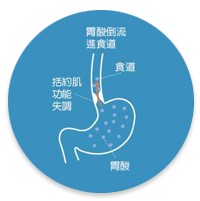
- Peptic Ulcer
Peptic Ulcer
Peptic ulcer disease (PUD) is a common disease of the digestive system. It usually occurs in the stomach and proximal duodenum. The lifetime risk for developing a peptic ulcer is approximately 10%. Peptic ulcer disease is caused by a bacterial infection (Helicobacter pylori) in the stomach or the use of certain painkillers (nonsteroidal anti-inflammtory drugs - NSAIDs) and aspirin/ other anti-platelet agents. Patients with peptic ulcer can be asymptomatic. If symptoms occur, they may include a burning pain in the middle or upper stomach between meals or at night, bloating, heartburn, nausea or vomiting. In severe cases, symptoms can include hematemesis, coffee ground vomiting and melena, weight loss, severe pain in the mid to upper abdomen. Individuals with PUD are at risk of developing complications such as haemorrhage, perforation and obstruction, and mortality among patients with these complications is high. Oesophagogastroduodenoscopy (OGD) is the preferred diagnostic test in the evaluation of patients with suspected PUD.
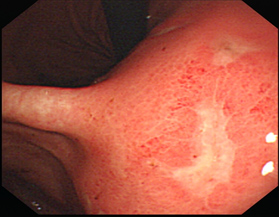
- Acute upper gastrointestinal bleeding
Acute upper gastrointestinal bleeding
Acute upper gastrointestinal bleeding (UGIB) is a common medical emergency with an annual incidence of approximately 130 per 100,000 adults in Hong Kong. Acute gastrointestinal (GI) bleeding is a potentially life-threatening condition associated with high morbidity and mortality. Bleeding may occur throughout the GI tract. The most frequent cause of UGIB is peptic ulcer disease, which accounts for 35-50% of reported cases. Other underlying etiologies of UGIB include gastroduodenal erosions (8-15%), esophagitis (5-15%), varices (5-10%), Mallory-Weiss tears (15%), and vascular malformations (5%).
Symptoms of upper gastrointestinal bleeding are hematemesis, coffee ground vomiting and tarry stool. In some severe cases, it may lead to dealth.
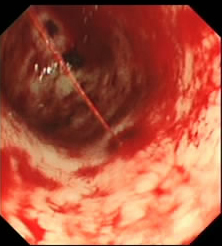
- Stomach Cancer
Stomach Cancer
Stomach cancer is developed due to the abnormal proliferation of mucosal cells on the inside lining of the stomach (adenocarcinoma). Gastric adenocarcinoma is the most common type of stomach cancer, commonly known as "stomach cancer." Initially gastric mucosa may be due to inflammation, into atrophic gastritis, intestinal metaplasia , after years of progress to the abnormal proliferation of cells , and finally develop to cancer, which is a series of long-term " carcinogenic " evolution. Gastric cancer ranks the forth most common cancer-related cause of mortality in Hong Kong.
Although a gradual declining trend is observed in Europe and the United States, the incidence of stomach cancer remains rather steady in Asia. Major risk factors for gastric cancer include "H. pylori" infection, precancerous lesions or genetic factors of gastric cancer.
Patients with early gastric cancer do not have associated symptoms. It shares similar symptoms with other gastric diseases (chronic gastritis , peptic ulcer, or other symptoms of functional gastrointestinal disorders) such as: abdominal pain, flatulence , poor appetite, melena , etc. Patients having end stage of stomach cancer may also suffer from weight loss, loss of appetite , fatigue , difficulty swallowing, persistent vomiting , massive ascites and other advanced symptoms . Gastric cancer is mainly diagnosed by Oesophagogastroduodenoscopy and biopsy histopathology.
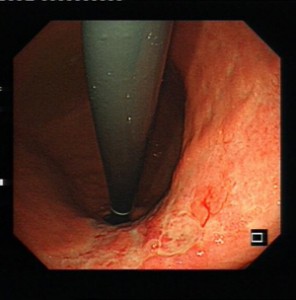
-

Liver - Hepatitis
Hepatitis
Hepatitis A is an acute viral hepatitis infected through eating or drinking contaminated food and water.
Chronic hepatitis B is an inflammation of the liver caused by the hepatitis B virus which can be acute or chronic. In Hong Kong population, about 8-10% of people are infected with the hepatitis B virus. Chronic hepatitis B is the common cause of cirrhosis and liver cancer.
Hepatitis C is the inflammation of the liver caused by the hepatitis C virus. In Western countries, hepatitis C is a common cause of cirrhosis and liver cancer, but it is not common in Asia. According to a local survey, about 0.5% of the Hong Kong population is infected with hepatitis C virus.
Hepatitis E is an acute viral infection of the liver. Routes of infection include eating or drinking contaminated food and water. Direct person to person contact is a relatively rare transmission route.
For investigation, please click here.
- Autoimmune hepatitis
Autoimmune hepatitis
Autoimmune hepatitis (AH) is the self-induced hepatitis caused by body's immune system attacking the liver cells. The majority of patients aged 15-40 years old, of which about 70% are women. Autoimmune hepatitis is a rather serious illness and is usually chronic in nature which can last for several years throughout the course of the disease. Without proper treatment, the disease may eventually lead to cirrhosis or even liver failure.
Most patients with autoimmune hepatitis have no symptoms, only a small portion of patients will have fatigue, abdominal discomfort, nausea, loss of appetite, jaundice, hepatomegaly, dark urine and lighter stool color etc. In serious case, ascites may be occurred.
- Non-alcoholic fatty liver
Non-alcoholic fatty liver
Fatty liver is a condition that excessive fat accumulates in the liver cells, and its content exceeds 10% by weight of the liver. Non-alcoholic fatty liver disease (NAFLD) is a chronic liver disease that is closely related to metabolic diseases such as diabetes, hypertension, hyperlipidemia and obesity. Its characteristic is very similar to that of alcoholic fatty liver, but it occurs in people with little or no alcohol consumption. In developed countries, non-alcoholic fatty liver disease has become one of the most common chronic liver diseases which about 20% of the population are affected.
- Cirrhosis
Cirrhosis
Cirrhosis is caused by repeated liver damage resulting in liver atrophy and structural damage. Generally speaking, some of the injured liver cells will die after damaged, but the liver cell can be regenerated, so that the injured part can be healed. However, if there is chronic and continuous liver damage, some of the damaged areas will have scars. Because the scar tissues do not have any function, too many scars will affect the normal function of the liver, resulting in cirrhosis eventually. Cirrhosis can cause a series of complications and may develop into cancer. Chronic hepatitis B, chronic hepatitis C and alcoholic liver disease are the common causes of cirrhosis.
- Liver cancer
Liver cancer
Liver cancer here is talking about the primary liver cancer. Liver cancer caused by proliferation of tumor from other parts of the body is called the liver metastatic tumors. Because hepatitis B is very common in Hong Kong, and hepatitis B may increase the risk of having liver cancer, liver cancer is the fourth most common cancer in Hong Kong and the mortality rate ranked third among various cancers.
-

Pancreas and bile duct system - Gastrointestinal stromal tumor (GIST)
Gastrointestinal stromal tumor (GIST)
Gastrointestinal stromal tumor can be found in any area of the gastrointestinal (GI) track such as esophagus, stomach, pancreases, large intestine, small intestine and appendix. Small GISTs often do not cause symptoms, and are usually discovered incidentally on upper GI endoscopy or computer tomography. Large GISTs may cause abdominal discomfort / pain, or even GI bleeding.

- Bile duct cancer
Bile duct cancer
Structure of bile duct includes intrahepatic and extrahepatic bile duct, while bile duct cancer can be found in anywhere of the bile duct and can be defined according to the location it has been discovered as below:
- Intrahepatic cholangiocarcinoma
- Extrahepatic cholangiocarcinoma
- Hilar cholangiocarcinoma (Occurs at the junction of extra hepatic bile duct and liver)
- Klatskin Tumour (Occurs at the junction of left and right hepatic bile duct)
The symptoms of bile duct cancer are as well depended on the location of cancer. Commonly seen symptoms include yellowing, stool become pale in color, urine become deep in color, abdominal or back pain, unknown reason weight loss and no feeling of hunger. Fever may occur due to cholangitis, which is a result of cancerous obstruction.
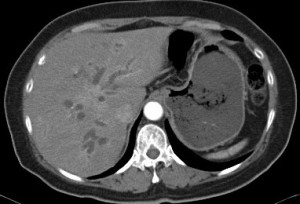
- Pancreatic cancer
Pancreatic cancer
Pancreases is an organ located behind the stomach. Its function is to provide digestive enzymes and to regulate hormones of metabolism. There is no significant symptom in the early stage of pancreatic cancer. Thus, it is difficult to be detected. Once symptoms appear, they are mostly at a later stage of stage that could not conduct operation procedure. The symptoms of pancreatic cancer include yellowing, stool become pale in color, urine become deep in color, abdominal or back pain, unknown reason weight loss and no feeling of hunger.
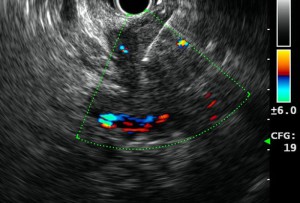
- Mucinous cysts
Mucinous cysts
Although most of them are benignant, there are risks of becoming malignant. Small size mucinous cysts are mostly discovered by chance, while large size mucinous cysts will cause abdominal pain. The most common type of mucinous cysts are:
1. Intraductal papillary mucinous neoplasm (IPMN), with subtype main duct, branch duct and mix type.
2. Mucinous cystic neoplasm (MCN)
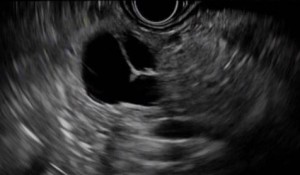
- Serous cysts
Serous cysts
Usually serous cysts are benignant and the most common type is serous cystadenoma. Serous cystadenoma is featured with microcysts and is discovered by chance. Abdominal pain may result from large serous cystadenoma.

- Pancreatic cystic lesions
Pancreatic cystic lesions
Pancreatic cystic lesions can be divided into the below:
1. Non-neoplastic cysts – simple cyst, pseudocyst
2. Neoplastic cysts – this can further be divided into serous and mucinous
- Pancreatitis
Pancreatitis
Pancreatitis can be divided into chronic or acute type. Chronic type may last for a few years, while acute type will appear suddenly and last for a few days. Both types will result as below:
- Upper abdominal pain, this pain may refer to back pain
- Vomiting
Other gastrointestinal or pancreatic/bile diseases may also lead to the above symptoms, thus, clinical symptoms and image check such as computer tomography are needed for confirmation of the disease.
- Common bile duct (CBD) stone
Common bile duct (CBD) stone
If the bile stone is causing obstruction to the bile duct, this may result in the below:
- Sudden and severe pain in the abdominal area
- Back pain between your shoulder blades
- Nausea or vomiting
- Yellowing of your skin and whites of your eyes
- Fever with chills
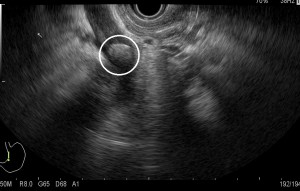
-

Small Bowel - Obscure gastrointestinal bleeding
Obscure gastrointestinal bleeding
Obscure GI bleeding, defined as bleeding from the GI tract that persists or recurs without an obvious etiology after oesophagogastroduodenoscopy (OGD), colonoscopy, and radiologic evaluation of the small bowel such as small bowel follow-through or enteroclysis, though in practice, patients are typically diagnosed with obscure bleeding based on upper endoscopy and colonoscopy results alone without undergoing radiologic procedures. Obscure gastrointestinal bleeding could be overt or obscure based on the presence or absence of clinically evident bleeding.
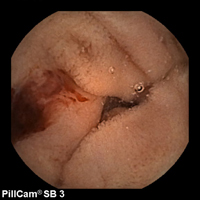
- Crohn’s Disease
Crohn’s Disease
Crohn’s Disease is a type of inflammatory bowel disease. This is an inflammatory condition of unknown etiology that can affect any portion of the gastrointestinal tract from the mouth to the perianal area. The most common affected regions are the end of the small bowel (the ileum) and the beginning of colon.




